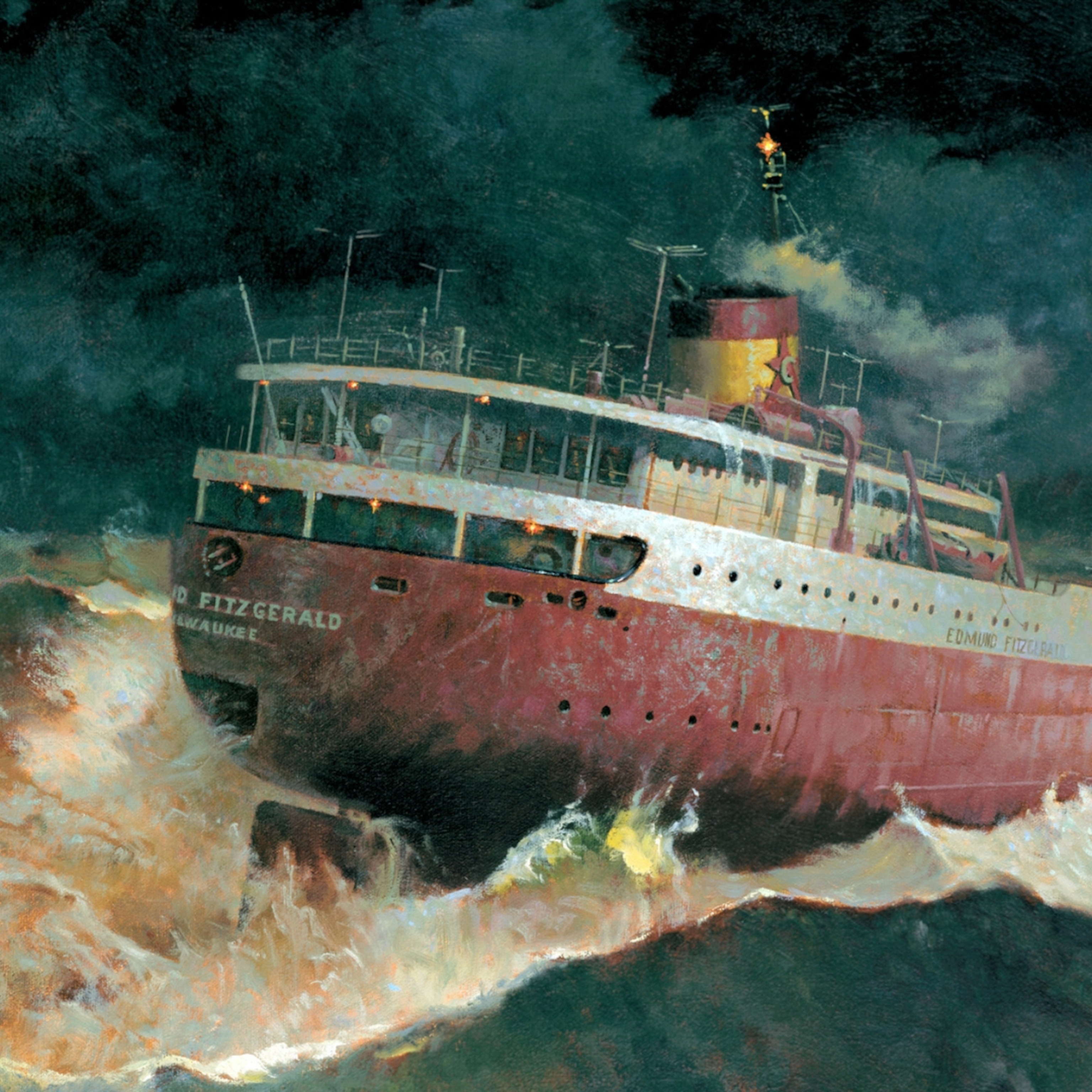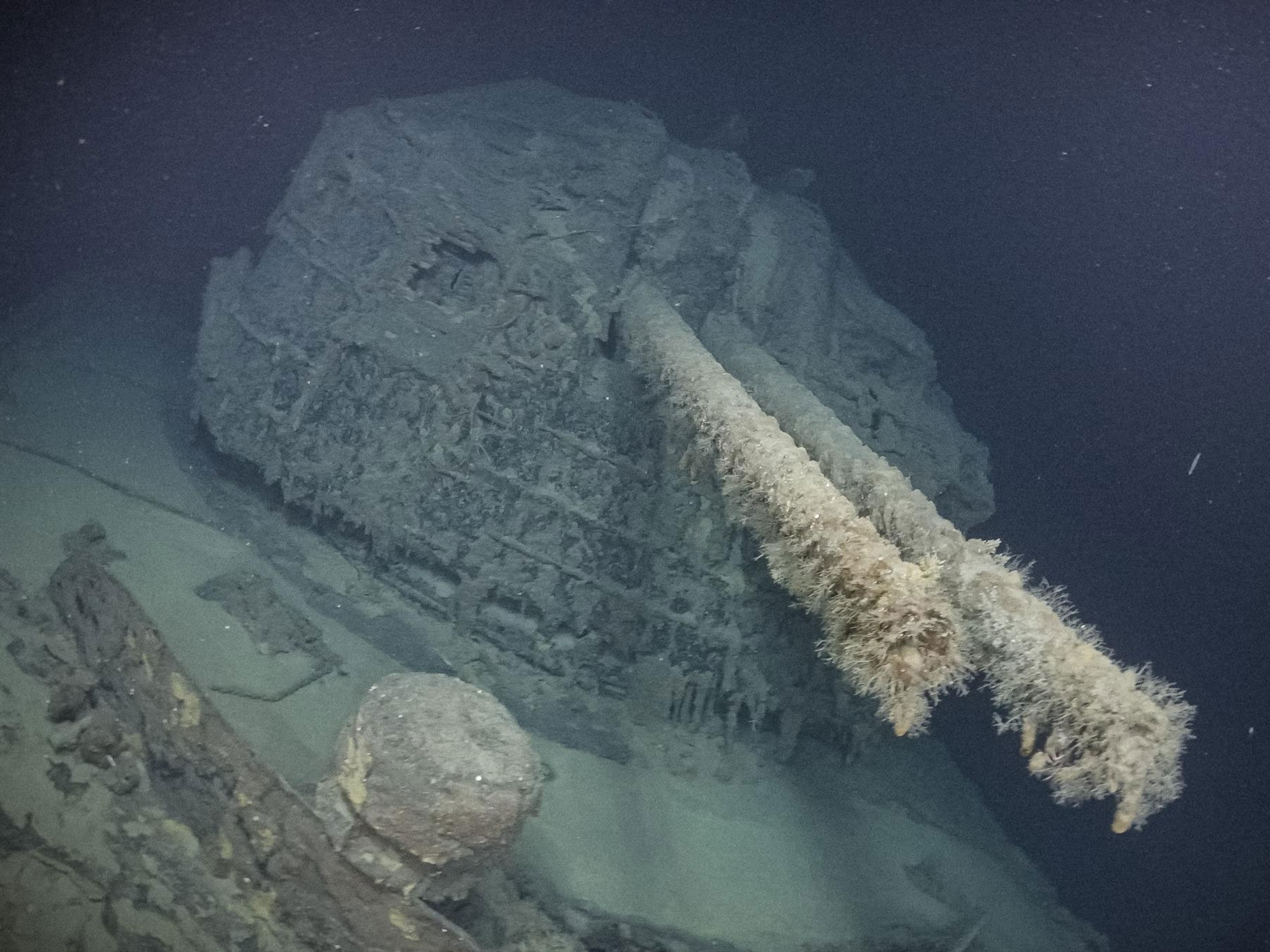
Titanic at 100: Be Among the Last to Dive to Wreck Site?
With increased access, ship's survival is in jeopardy, advocates warn.
ON TV: Save the Titanic with Bob Ballard premieres at 10 p.m. ET/PT on Monday, April 9, on the National Geographic Channel.
An anniversary deep-sea diving expedition will offer tourists a chance to visit the R.M.S. Titanic, a hundred years after the legendary ship sank to the bottom of the frigid North Atlantic.
As part of a $60,000, two-week cruise, a pair of tourists can get shoehorned with a pilot into a tiny Russian MIR submersible that's less than 7 feet (2.1 meters) wide. The trip to Titanic's resting place takes about 2.5 hours, and a round-trip dive lasts about 8 to 10 hours.
"I think one thing that captures people is a direct link to this almost mythological maritime character, the Titanic," said Rob McCallum of Deep Ocean Expeditions, which holds exclusive charter for Titanic dives.
"Being able to go and actually see it and pay homage to it, if you like, is an incredible aspect of his expedition."
(See pictures of Titanic then and now in National Geographic magazine.)
But summer 2012 is the first season since 2005 that Deep Ocean Expeditions has taken people to the Titanic—and it could be the last.
"For a variety of reasons, these are the last dives that the Deep Ocean Expeditions is going to do on Titanic," said McCallum, whose company began diving to the Titanic in 1998. The outfitter also takes tourists to the Bismarck shipwreck, the North Pole, deep-sea hydrothermal vents, and other extreme sites.
"Our support ship is going into retirement soon, and the submersibles are going to go back into government work."
At the same time, some historians and other advocates are arguing against tourist dives to the wreck, saying the underwater site is being endangered by looting, littering, and poorly controlled access.
For instance, Edward Kamuda, president of the Titanic Historical Society, said he would rather not see expeditions like this summer's take place at all.
"To us it's a grave site—why disturb it any further?" he said. "One couple went down and got married at the site. There will be cruise ships going out there for the anniversary and drinking champagne and that sort of thing."
"Is that an appropriate way to commemorate the sinking of this ship and the loss of all those lives?"
Discoverer Wants Titanic Protected
More than 1,500 passengers and crew died after the supposedly unsinkable Titanic struck an iceberg in the wee hours of April 14, 1912, and sank at 2:20 a.m. on April 15. (See a Titanic crash-scene interactive.)
The ship's whereabouts remained a mystery until the wreck was found on September 1, 1985, about 380 miles (611 kilometers) southeast of Newfoundland (map).
Since then, people have debated about how to best protect the Titanic, and what type of access to the site should be allowed.
For instance, though Deep Ocean Expeditions won't return to Titanic, other tourists and treasure seekers likely will—legally or not.
That scenario troubles deep-sea explorer Bob Ballard, who discovered the wreck 25 years ago. (Related: "Titanic Was Found During Secret Cold War Navy Mission.")
Ballard, also a National Geographic Society explorer-in-residence, believes the ship's very survival is threatened by its growing accessibility. (National Geographic News is owned by the National Geographic Society.)
"I have no problem with people going to the Titanic—I have a problem with people destroying the Titanic," he said.
According to Ballard, "we have smoking gun evidence of all kinds of damage. We have a photo mosaic of the ship before any submarines showed up, and [today] we can show you where they've landed on the ship. We can show you where they knocked the crow's nest off." (Explore a 2004 photomosaic of the Titanic wreck.)
Ballard also stressed that many photos show the site littered with trash, including objects thrown overboard by surface support vessels and ballast dropped by submersibles.
"I don't mind the dives, but they should descend off site and drop their weights well away from the debris field," he said.
"Then they could drive over the wreck to visit it and don't touch it, and don't take anything, before driving away."
Titanic-philes Drawn to Deep-Sea Dive
But Deep Ocean Expeditions's McCallum said that his expeditions are cut of a different cloth.
"Most of the people going out there with us have an absolute reverence for Titanic," McCallum said.
(Watch an animation of Titanic's iceberg collision, breakup, and sinking.)
Danish investment banker and adventurer Per Wimmer is one of the people already signed up for the 2012 Titanic anniversary dive. In 2008 he participated in the first tandem skydive over Mount Everest, and he is currently training for a space voyage in 2013 that would make him the first Dane in orbit.
"Pushing boundaries is the kind of stuff that gets me out of bed," Wimmer said. Titanic also holds a special appeal, he added.
"This is probably the most recognizable object to dive to in the world, and this is the perfect time to do it," he said. Wimmer also believes the trip will honor those who didn't survive, rather than disrespect the dead.
"It's a very respectful visit that we'll do with dignity, and I think that's going to make it quite an emotional voyage."
Expedition organizer McCallum added that, other than Wimmer, very few of his other clients fit the profile of wealthy adventurers.
Instead they tend to be what he dubs "Titanic-philes," most of whom are "people of rather moderate means who've worked hard and saved hard to do this trip," he said.
"Some of them are relatives of survivors or people who died in the wreck. Others have just been captured by the Titanic story since they were kids, as many people are."
Titanic Dive to Leave No "Footprints"
The Deep Ocean Expeditions dive this summer will leave Titanic in the same condition—taking nothing away and causing no damage to the ship McCallum added.
"Occasionally you'll read about subs bumping into the wreck," he said, though he suggests the reports may be exaggerated.
"These are 50-million-dollar vehicles—you don't just bang them into things, and especially not at depth, where pilots do everything they can to avoid bumping into anything because their number one fear is entanglement."
Instead, McCallum places most of the blame for Titanic's increasingly frail condition squarely on Mother Nature.
"You're telling me that six seasons of infrequent visits by a small submarine that's neutrally buoyant at depth and virtually weightless have contributed a lot to [the Titanic's] decline? I don't believe that's the case," he said.
"The ship is deteriorating rapidly because it's a metal ship in the salty sea, and it's been there for almost a hundred years."
(Read "Titanic Is Falling Apart.")
Picking Jewels Off Titanic
Meanwhile, Titanic discoverer Bob Ballard said he and other experts have proof that some groups have intentionally salvaged artifacts at the site.
"We can show you where they took the light off" a part of the wreck, he said.
Salvage operators "have denied taking anything off the Titanic proper. How can they say they didn't take it off the ship when we have photos of it on the ship, and now it's in an exhibit?"
It's becoming far easier to perform illegal salvage on the site now that remotely operated vehicle (ROV) technology has proliferated so widely, Ballard added.
"Pandora's box has been opened," he said. "ROVs are owned by a lot of private individuals. So it's as if there is a museum down there with no lock on it. Do you go through the doors to appreciate it—or to plunder it?"
Ballard said Senator John Kerry of Massachusetts has recently introduced a bill that would add more teeth to the R.M.S. Titanic Maritime Memorial Act of 1986, which is meant to protect the site.
"The submersibles these companies lease are government owned by Russia and France, and the pilots are civil servants," he said.
Getting those countries to agree to additional anti-salvage protections could go a long way toward allowing the ship to rest in peace, he said.
(See pictures of Titanic's rediscovery.)
Can Titanic Be Saved?
Ballard also agreed that time and natural elements have taken an enormous toll on the ship, and there's no telling how long Titanic might last.
But the explorer has an ambitious plan to combat nature as well—he's applied for a permit to clean the ship's hull and use robots to coat it with anti-fouling paint.
"When I first came to the ship in 1985, I saw original anti-fouling paint on the bottom and no corrosion there. It works, but obviously they didn't think they'd need to paint the whole ship with anti-fouling paint."
Today's supertankers use robots to clean and paint their hulls underwater, Ballard explained, making his plan technically feasible.
It's also well worth doing, he said, "so the hull doesn't splay open and expose the highly preserved interior with its precious contents."
For instance, James Cameron's recent Titanic footage "shows the Turkish baths looking like they're about to be turned on."
If Ballard has his way, someday adventurous divers with deep pockets won't be the only ones to visit Titanic.
"We can use remote imaging technology to turn the Titanic into an underwater electronic museum," he said. "That way it would be accessible to everyone."







